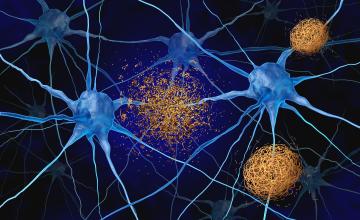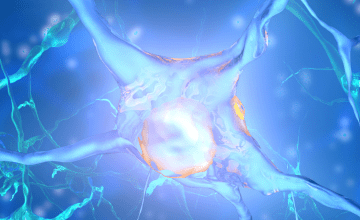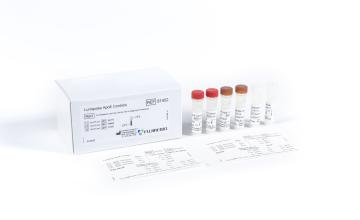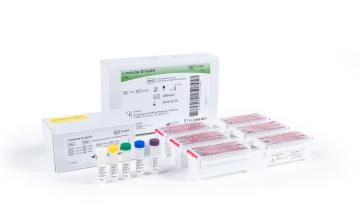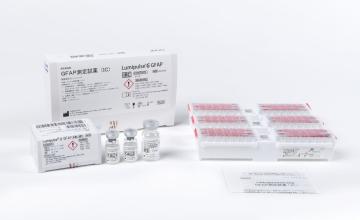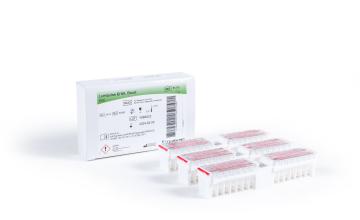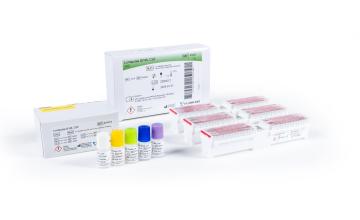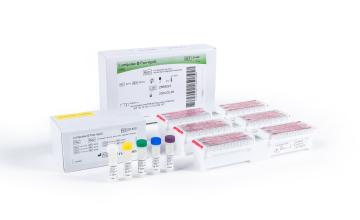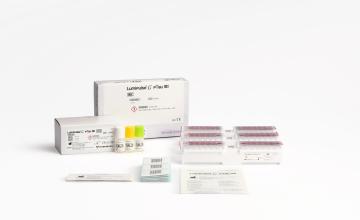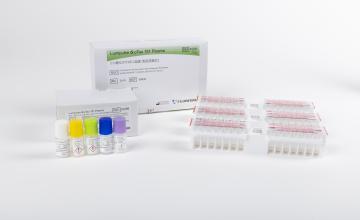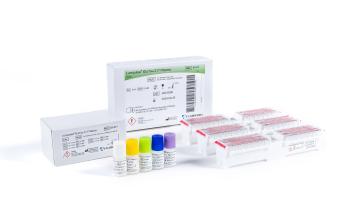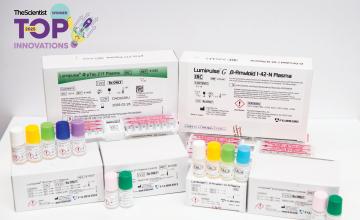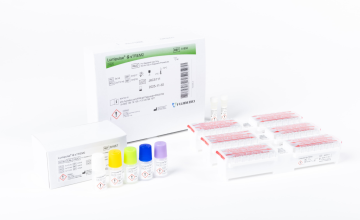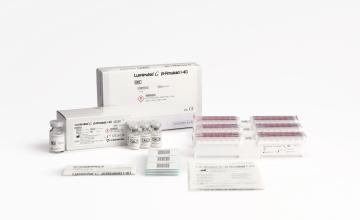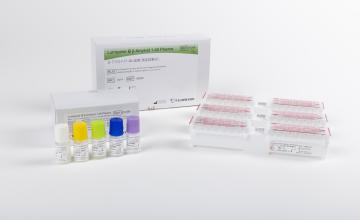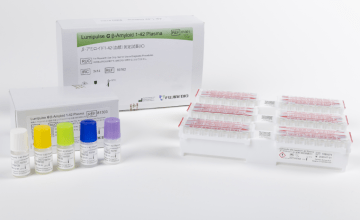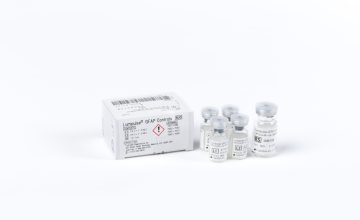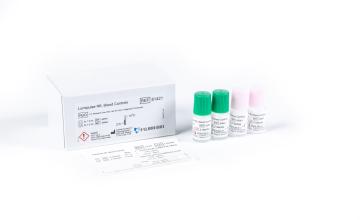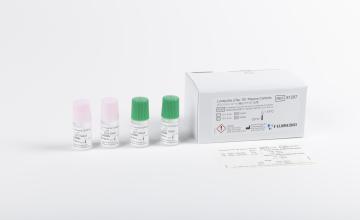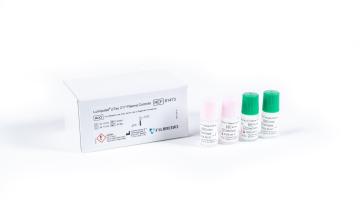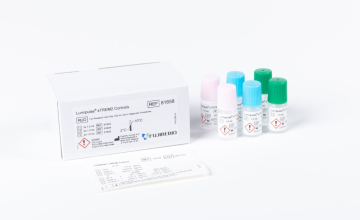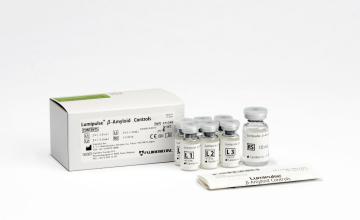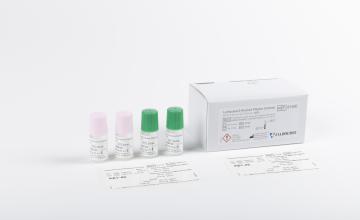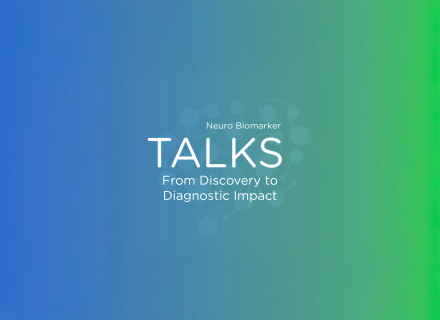On November 3, 1906, the German clinical psychiatrist and neuroanatomist Alois Alzheimer reported “A...
The Future of Alzheimer's Disease Diagnosis
Aug 27, 2025
What is the future of Alzheimer's disease diagnosis?
Two anti-amyloid drugs are now available to patients with mild cognitive impairment (MCI) or mild dementia due to Alzheimer’s Disease, slowing disease progression.1,2
These treatments are most effective in the earliest symptomatic stages of the disease.1,2 However, effective diagnosis can often take a year or more.3,4 Recent advances with diagnostic tools; including biomarker-based tests, digital cognitive assessments and retinal imaging; could help clinicians diagnose Alzheimer’s Disease earlier and more accurately.
Digital cognitive tests to assess cognitive decline
Digital cognitive assessments show promise to detect subtle cognitive changes, including those associated with early Alzheimer’s disease, and may offer advantages in terms of speed, accessibility, and independent administration.
These tools can help clinicians determine whether a patient would benefit from a more comprehensive cognitive assessment and potential biomarker testing.5–7 However, digital cognitive tests are so new that standardized clinical guidelines for their use are still being developed.8
Multiple digital cognitive tools are cleared by the FDA which includes: 9
- Automated Neuropsychological Assessment Metrics (ANAM: a computerized cognitive battery that measures multiple components of cognitive function including memory, attention, concentration, problem-solving, and decision-making. The assessment typically requires 20 to 25 minutes.10
- Cambridge Neuropsychological Test Automated Battery (CANTAB Mobile®): a touchscreen-based, self-administered cognitive test that assesses visuospatial episodic memory, mood (depression), and functional status (everyday tasks). The assessment takes under 10 minutes and provides an age-adjusted report with outputs for memory and mood.11
- Cognigram: A 10 to 15-minute computerized test, that can be administered at home or in the clinic, evaluates domains such as attention, learning, memory, psychomotor function and working memory. It is designed to detect subtle cognitive changes.12
- Cognision: A 60-minute test that uses electroencephalography and measurement of auditory evoked potential to assess cognitive impairment.13
- Cognivue Clarity: A self-administered 10-minute test that evaluates memory, visuospatial ability, executive function, processing speed, and discrimination. The test uses a joystick for user input. Additionally, its Amyloid Risk Measure (CARM) algorithm provides a predictive metric for amyloid positivity.14
- Cognetivity CognICA: A five-minute, self-administered computerized test often taken on a tablet that requires patients to complete categorization tasks, such as determining whether an image represents an animal. The test assesses processing speed and accuracy as proxies for cognitive function.15
Confirming and staging Alzheimer’s pathology
Mild cognitive impairment (MCI) may be caused by a number of underlying conditions unrelated to Alzheimer’s disease, including hormonal or vitamin deficiencies, certain medications, sleep disorders, and depression.16 Some of these causes are potentially reversible with appropriate treatment.16,17
Once causes unrelated to Alzheimer’s disease have been ruled out, biomarker testing can be used to detect Alzheimer’s disease pathology and determine disease stage. Patients diagnosed with MCI due to AD or early AD dementia may be eligible for anti-amyloid disease-modifying therapies, which have been shown to slow disease progression to a modest degree1,2 For a more detailed overview of biomarker testing, refer to our previous article.
Blood-based biomarkers
According to recommendations from the Global CEO Initiative on Alzheimer’s disease, blood tests intended for triaging use in primary care settings should demonstrate ≥90% specificity and ≥85% sensitivity for detecting amyloid pathology. In specialty care, the recommended specificity may be slightly lower, ≥75–85%, depending on the availability of follow-up confirmatory testing, such as CSF analysis or amyloid PET imaging.18 When the results are indeterminate, additional testing with CSF analysis or PET imaging may be needed to confirm the presence of amyloid pathology. When used as a standalone confirmatory tool, BBM tests should perform comparably to CSF assays, with both sensitivity and specificity near 90%.19
Several blood tests are available in the U.S. as laboratory-developed tests (LDTs), which are offered through individual laboratories but are not FDA-cleared. Unlike LDTs, the first FDA-cleared plasma-based in vitro diagnostic (IVD) test for Alzheimer’s disease was authorized on May 16th, 2025: the Lumipulse® G pTau 217/β-Amyloid 1-42 Plasma Ratio. This test is intended to aid in the detection of amyloid pathology in adults over 50 with symptoms of cognitive decline.20
Cerebrospinal fluid biomarkers
Cerebrospinal fluid is collected through a lumbar puncture and analyzed for Alzheimer’s disease biomarkers. Confirmation of amyloid pathology in CSF is achieved by measuring the ratios of pTau 181/ β-Amyloid 1-42, β-Amyloid 1-42/40, or tTau/β-amyloid 1-42.21Because of their reliability, Cerebrospinal fluid biomarkers are often used as confirmatory tests before initiating anti-amyloid therapy.22
Imaging biomarkers
PET imaging is commonly used to confirm amyloid pathology by utilizing a radioactive tracer to bind beta-amyloid (β-Amyloid) plaques in the brain. There are currently three FDA-approved fluorine-18 radiotracers to detect β-Amyloid: 18F-florbetapir, 18F-flutemetamol, 18F-florbetaben.23 Tau PET imaging, using the FDA-approved tracer 18F-flortaucipir, is not used for diagnostic confirmation but may aid in staging the disease by assessing the regional distribution of neurofibrillary tangles.23,24
New tests on the horizon
Several digital cognitive and biomarker-based tests are currently in development. While some are already available for clinical use, they have not yet received FDA clearance:
- Digital tests that help screen for cognitive impairment
- Tools that assess vocal biomarkers, analyzing changes in speech patterns and tempo, that may indicate MCI.25
- Remote AI-driven cognitive testing batteries.5,26
- Wearables and passive monitoring systems, including in-home sensors that collect information and detect potential changes in gait, heart rate, physical activity, and sleep patterns to identify early signs of cognitive decline.27
- Eye-tracking assessments that measure gaze points and eye movements to provide insights into cognitive function, visual attention, memory, and processing speed.28
- Blood biomarker tests
- Several companies and laboratories offer blood tests that measure biomarkers, such as pTau-217, pTau217/npTau-217, β-Amyloid 1-42/1-40, NfL, and GFAP.19
- Blood-based biomarker research continues to accelerate. A growing number of exploratory biomarkers are under investigation for their potential to capture disease heterogeneity, and aid in staging or monitoring progression These include SNAP-25, sTREM2, p-tau231, p-tau205, MTBR-tau, NPTX2, GFAP, and composite scores based on multiple biomarkers.29–34
- SNAP-25: A marker of synaptic degeneration associated with cognitive decline.30
- sTREM2: The soluble, cleaved form of the microglial membrane receptor TREM2, detectable in CSF and blood. Elevated sTREM2 reflects microglial activation and neuroinflammation, and higher levels are associated with increased risk of MCI and Alzheimer’s disease. However, while it might indicate cognitive decline, sTREM might not be reliable to distinguish between disease stages.31
- p-tau231: A phosphorylated tau isoform that increases in the earliest stages of AD and is enriched in pre-tangles.32
- p-tau205: A phosphorylated tau isoform that correlates with brain atrophy and hypometabolism, reflects later tau pathology, and is closely associated with tau PET signal.32
- MTBR-tau: A tau protein fragment reflecting insoluble tau aggregates, closely associated with tau tangle pathology and elevated during the symptomatic, later stages of the disease.33
- NPTX2: A protein involved in synaptic transmission and neuronal excitability.29 Low levels are associated with tau load and cortical atrophy, but not amyloid burden.29
- GFAP: A marker of astroglia activation, associated with early amyloid deposition and disease progression.34
- Cerebrospinal fluid tests
- YWHAG/NPTX2 ratio, SNAP-25 and VAMP-2 are being investigated as biomarkers predictive of cognitive decline and synaptic injury/dysfunction.29
- YWHAG: A member of the YWHA family of proteins that regulate tau phosphorylation and accumulation.29
- NPTX2: A protein involved in synaptic transmission and neuronal excitability.29 Low levels are associated with tau load and cortical atrophy but not amyloid burden.29
- YWHAG/NPTX2 ratio: A biomarker of synaptic dysfunction and cognitive impairment in Alzheimer’s. It increases with aging, predicts AD onset and progression, and may help stratify patients by risk of future cognitive decline.
- SNAP-25: A presynaptic protein and marker of synaptic degeneration associated with cognitive decline and cortical atrophy.30
- VAMP –2: A synaptic vesicle protein linked to synaptic degeneration; its levels change across the AD continuum and are associated with cognitive impairment and tau pathology.35
- Retinal and brain imaging tests in development
- Multimodal neuroimaging data analyzed by machine learning algorithms to discriminate between healthy controls, MCI, and Alzheimer’s, with promising but still research-stage diagnostic performance.36
- Proton magnetic resonance spectroscopy (MRS) measures changes in metabolites, including N-acetyl aspartate and myo-inositol, as well as their ratio, to predict amyloid-β pathology.37
- Retinal imaging and optical coherence tomography are being investigated as non-invasive tools to detect early structural and vascular changes in the retina that may be associated with Alzheimer’s disease.38,39
The future of Alzheimer’s diagnosis
The rollout of new imaging, CSF/blood-based tests, digital tools, and retinal/eye-tracking biomarkers has the potential to significantly improve diagnosis and patient care over the next decade. These innovations could enable remote assessment of cognitive impairment, assist in the identification and confirmation of biomarkers, and monitor disease progression more effectively.
References:
- van Dyck CH, Swanson CJ, Aisen P, et al. Lecanemab in Early Alzheimer’s Disease. New England Journal of Medicine. 2023;388(1):9-21. doi:10.1056/NEJMoa2212948
- Sims JR, Zimmer JA, Evans CD, et al. Donanemab in Early Symptomatic Alzheimer Disease. JAMA. 2023;330(6):512. doi:10.1001/jama.2023.13239
- Juday TR, Holub A, Mattke S, et al. Real-world diagnostic, referral, and treatment patterns in early Alzheimer’s disease among community-based practices in the United States. Journal of Alzheimer’s Disease. 2024;102(4):1172-1182. doi:10.1177/13872877241297128
- Kvello-Alme M, Bråthen G, White LR, Sando SB. Time to Diagnosis in Young Onset Alzheimer’s Disease: A Population-Based Study from Central Norway. Journal of Alzheimer’s Disease. 2021;82(3):965-974. doi:10.3233/JAD-210090
- Polk SE, Öhman F, Hassenstab J, et al. A scoping review of remote and unsupervised digital cognitive assessments in preclinical Alzheimer’s disease. NPJ Digit Med. 2025;8(1):266. doi:10.1038/s41746-025-01583-5
- Fowler NR, Hammers DB, Perkins AJ, et al. Feasibility and Acceptability of Implementing a Digital Cognitive Assessment for Alzheimer Disease and Related Dementias in Primary Care. The Annals of Family Medicine. 2025;23(3):191-198. doi:10.1370/afm.240293
- Erickson CM, Wexler A, Largent EA. Alzheimer’s in the modern age: Ethical challenges in the use of digital monitoring to identify cognitive changes. Inform Health Soc Care. 2024;49(1):1-13. doi:10.1080/17538157.2023.2294203
- Staffaroni AM, Tsoy E, Taylor J, Boxer AL, Possin KL. Digital Cognitive Assessments for Dementia: Digital assessments may enhance the efficiency of evaluations in neurology and other clinics. Practical neurology (Fort Washington, Pa). 2020;2020:24-45. PMID: 33927583
- Alzheimer’s Association. Cognitive Screening and Assessment. Accessed July 1, 2025. https://www.alz.org/professionals/health-systems-medical-professionals/…
- ANAM FAQs. Vista Life Sciences. Accessed July 2, 2025. https://vistalifesciences.com/anam-faqs
- CANTAB Mobile awarded FDA clearance. Cambridge Cognition. Accessed July 2, 2025. https://cambridgecognition.com/cantab-mobile-awarded-fda-clearance/
- Cognigram. Cogstate. Accessed July 2, 2025. https://www.cogstate.com/healthcare/cognigram/
- Clinician Frequently Asked Questions. Accessed July 2, 2025. https://www.cognision.com/wp-content/uploads/2020/10/COGNISION-Clinicia…
- Galvin JE, Kleiman MJ, Harris HM, Estes PW. The Cognivue Amyloid Risk Measure (CARM): A Novel Method to Predict the Presence of Amyloid with Cognivue Clarity. Neurol Ther. 2025;14(3):865-880. doi:10.1007/s40120-025-00741-x
- Modarres MH, Kalafatis C, Apostolou P, Tabet N, Khaligh-Razavi SM. The use of the integrated cognitive assessment to improve the efficiency of primary care referrals to memory services in the accelerating dementia pathway technologies study. Front Aging Neurosci. 2023;15:1243316. doi:10.3389/fnagi.2023.1243316
- Anand S, Schoo C. Mild Cognitive Impairment.; 2025.
- Canevelli M, Grande G, Lacorte E, et al. Spontaneous Reversion of Mild Cognitive Impairment to Normal Cognition: A Systematic Review of Literature and Meta-Analysis. J Am Med Dir Assoc. 2016;17(10):943-948. doi:10.1016/j.jamda.2016.06.020
- Schindler SE, Galasko D, Pereira AC, et al. Acceptable performance of blood biomarker tests of amyloid pathology — recommendations from the Global CEO Initiative on Alzheimer’s Disease. Nat Rev Neurol. 2024;20(7):426-439. doi:10.1038/s41582-024-00977-5
- Global CEO initiative on Alzheimer’s disease. The CEOi Alzheimer’s Blood Test Performance Database. Alz Biomarker Hub. Accessed July 8, 2025. https://www.alzbiomarkerhub.org/performance-database-tool
- Fujirebio Receives Marketing Clearance for Lumipulse® G pTau 217/β-Amyloid 1-42 Plasma Ratio In-Vitro Diagnostic Test As An Aid To Identify Patients With Amyloid Pathology Associated With Alzheimer’s Disease. Fujirebio. 2025. Accessed July 1, 2025. https://www.fujirebio.com/en-us/news-events/fujirebio-receives-marketin…
- Barthélemy NR, Salvadó G, Schindler SE, et al. Highly accurate blood test for Alzheimer’s disease is similar or superior to clinical cerebrospinal fluid tests. Nat Med. 2024;30(4):1085-1095. doi:10.1038/s41591-024-02869-z
- Paczynski M, Hofmann A, Posey Z, et al. Lecanemab Treatment in a Specialty Memory Clinic. JAMA Neurol. 2025;82(7):655. doi:10.1001/jamaneurol.2025.1232
- Rabinovici GD, Knopman DS, Arbizu J, et al. Updated appropriate use criteria for amyloid and tau PET: A report from the Alzheimer’s Association and Society for Nuclear Medicine and Molecular Imaging Workgroup. Alzheimer’s & Dementia. 2025;21(1). doi:10.1002/alz.14338
- Vermeiren MR, Calandri IL, van der Flier WM, van de Giessen E, Ossenkoppele R. Survey among experts on the future role of tau‐PET in clinical practice and trials. Alzheimer’s & Dementia: Diagnosis, Assessment & Disease Monitoring. 2024;16(4). doi:10.1002/dad2.70033
- Kiyoshige E, Ogata S, Kwon N, et al. Developing and testing AI-based voice biomarker models to detect cognitive impairment among community dwelling adults: a cross-sectional study in Japan. Lancet Reg Health West Pac. 2025;59:101598. doi:10.1016/j.lanwpc.2025.101598
- Hajjar I, Okafor M, Choi JD, et al. Development of digital voice biomarkers and associations with cognition, cerebrospinal biomarkers, and neural representation in early Alzheimer’s disease. Alzheimer’s & Dementia: Diagnosis, Assessment & Disease Monitoring. 2023;15(1). doi:10.1002/dad2.12393
- Popp Z, Low S, Igwe A, et al. Shifting From Active to Passive Monitoring of Alzheimer Disease: The State of the Research. J Am Heart Assoc. 2024;13(2). doi:10.1161/JAHA.123.031247
- Xu Y, Zhang C, Pan B, Yuan Q, Zhang X. A portable and efficient dementia screening tool using eye tracking machine learning and virtual reality. NPJ Digit Med. 2024;7(1):219. doi:10.1038/s41746-024-01206-5
- Oh HSH, Urey DY, Karlsson L, et al. A cerebrospinal fluid synaptic protein biomarker for prediction of cognitive resilience versus decline in Alzheimer’s disease. Nat Med. 2025;31(5):1592-1603. doi:10.1038/s41591-025-03565-2
- Sauer M, De Rocker C, Grötschel L, et al. Blood‐based SNAP‐25 and VAMP‐2 in Alzheimer’s disease; relation to cognition, atrophy and synaptic density. Alzheimer’s & Dementia. 2023;19(S24). doi:10.1002/alz.083128
- Wang R, Zhan Y, Zhu W, Yang Q, Pei J. Association of soluble TREM2 with Alzheimer’s disease and mild cognitive impairment: a systematic review and meta-analysis. Front Aging Neurosci. 2024;16. doi:10.3389/fnagi.2024.1407980
- Teunissen CE, Kolster R, Triana‐Baltzer G, Janelidze S, Zetterberg H, Kolb HC. Plasma p‐tau immunoassays in clinical research for Alzheimer’s disease. Alzheimer’s & Dementia. 2025;21(1). doi:10.1002/alz.14397
- Horie K, Salvadó G, Koppisetti RK, et al. Plasma MTBR-tau243 biomarker identifies tau tangle pathology in Alzheimer’s disease. Nat Med. 2025;31(6):2044-2053. doi:10.1038/s41591-025-03617-7
- Varma VR, An Y, Kac PR, et al. Longitudinal progression of blood biomarkers reveals a key role of reactive astrocytosis in preclinical Alzheimer’s disease. Med. Published online June 2025:100724. doi:10.1016/j.medj.2025.100724
- Goossens J, Cervantes González A, Dewit N, et al. Evaluation of cerebrospinal fluid levels of synaptic vesicle protein, VAMP-2, across the sporadic Alzheimer’s disease continuum. Alzheimers Res Ther. 2023;15(1):186. doi:10.1186/s13195-023-01336-0
- Odusami M, Maskeliūnas R, Damaševičius R, Misra S. Machine learning with multimodal neuroimaging data to classify stages of Alzheimer’s disease: a systematic review and meta-analysis. Cogn Neurodyn. 2024;18(3):775-794. doi:10.1007/s11571-023-09993-5
- Sheikh-Bahaei N, Chen M, Pappas I. Magnetic Resonance Spectroscopy (MRS) in Alzheimer’s Disease. In: ; 2024:115-142. doi:10.1007/978-1-0716-3774-6_9
- Leal-Bernal C, Noriega- Ramírez S, Álvarez-Martínez J V., et al. Retinal and Vascular Findings in Optical Coherence Tomography in Healthy Cognitive Patients With Alzheimer Disease Biomarkers. Alzheimer Dis Assoc Disord. 2025;39(2):140-149. doi:10.1097/WAD.0000000000000669
- Cheung CY, Ran AR, Wang S, et al. A deep learning model for detection of Alzheimer’s disease based on retinal photographs: a retrospective, multicentre case-control study. Lancet Digit Health. 2022;4(11):e806-e815. doi:10.1016/S2589-7500(22)00169-8




